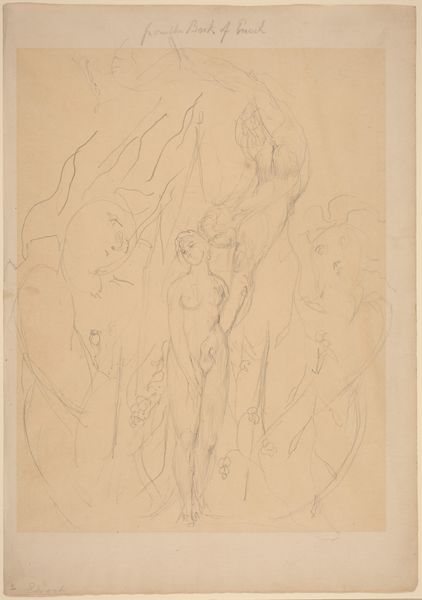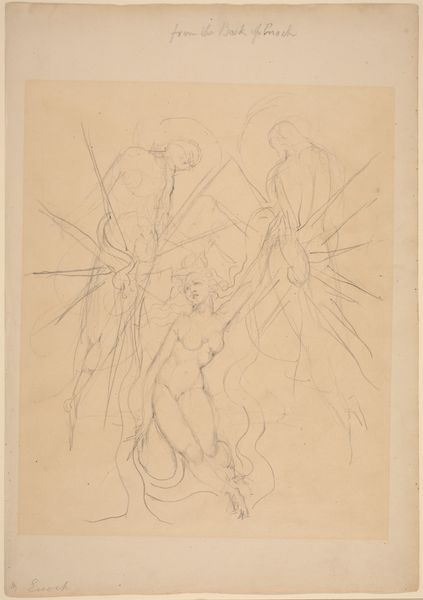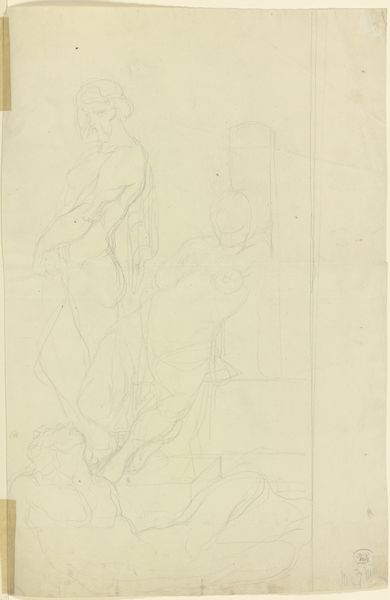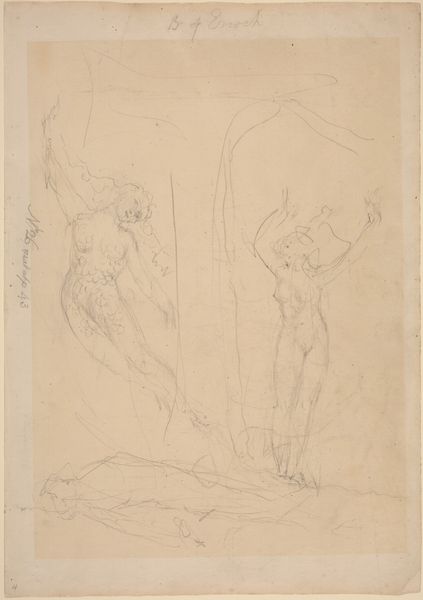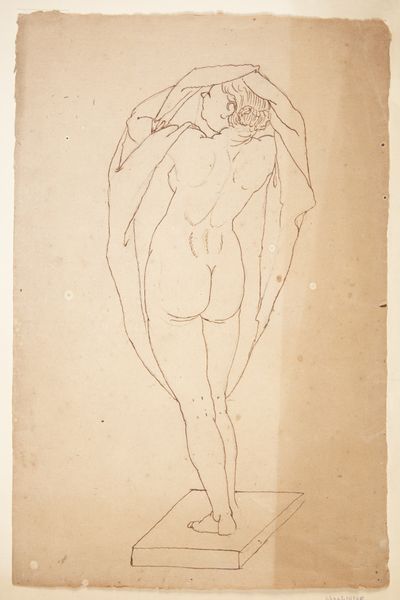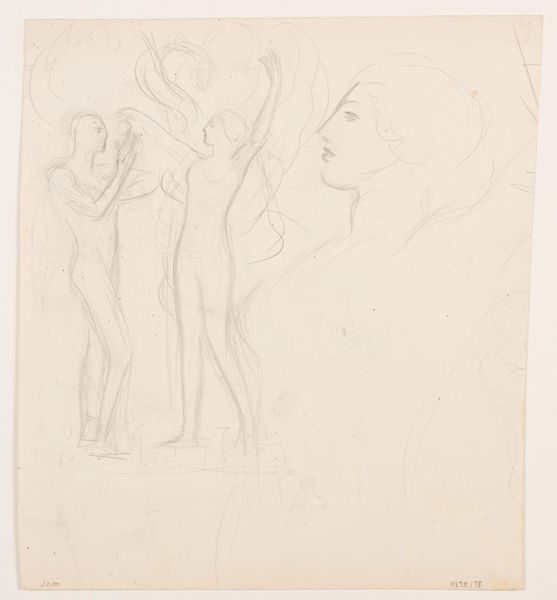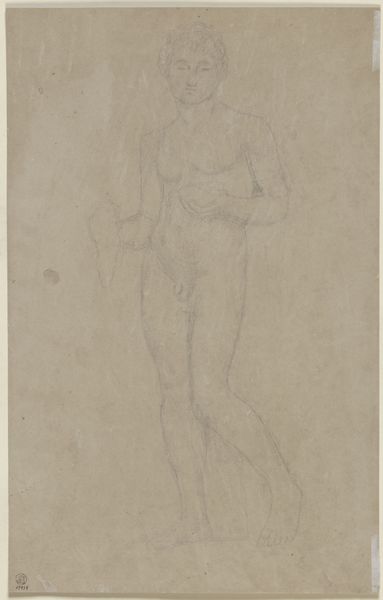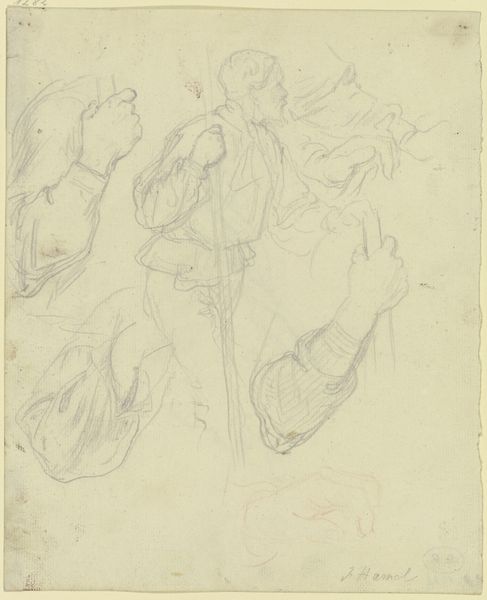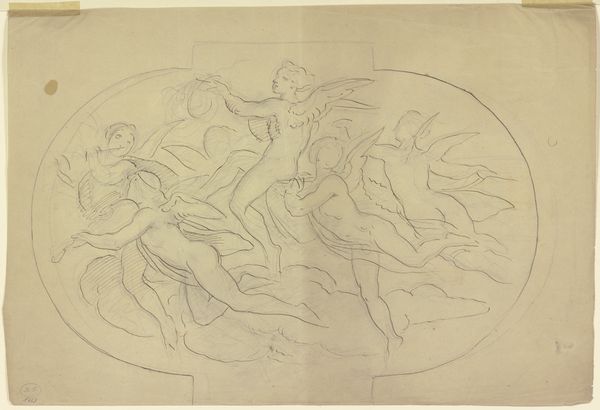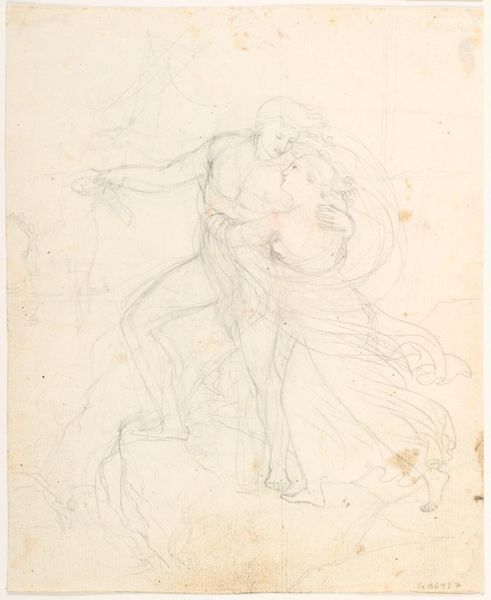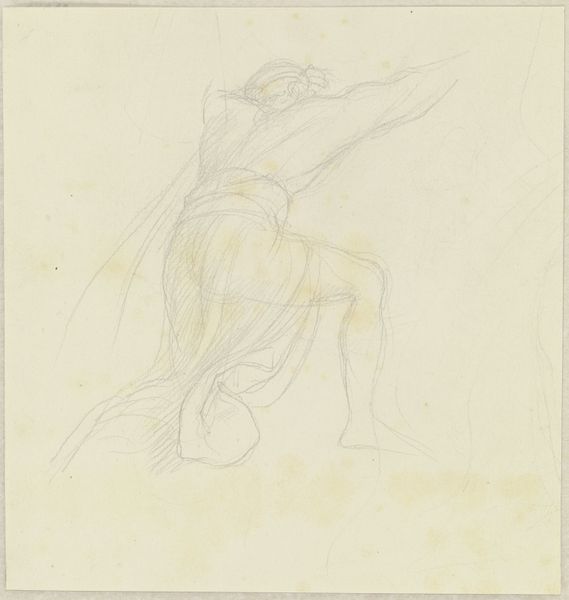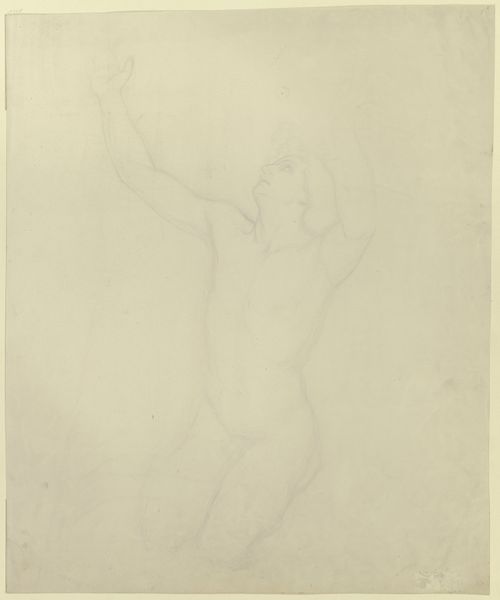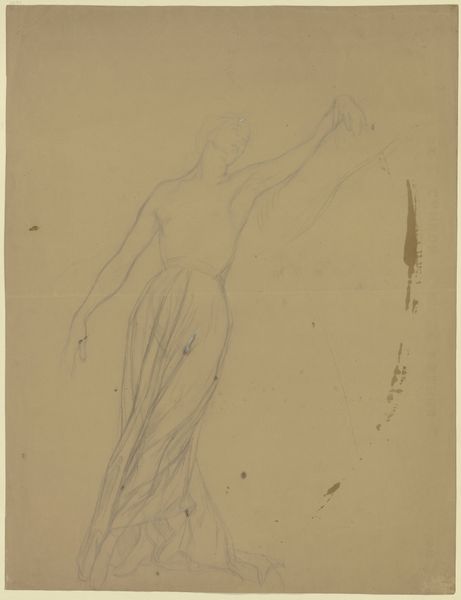
drawing, pencil
#
drawing
#
pencil sketch
#
etching
#
figuration
#
romanticism
#
pencil
#
nude
Dimensions: overall: 52.6 x 37 cm (20 11/16 x 14 9/16 in.)
Copyright: National Gallery of Art: CC0 1.0
Curator: We’re now looking at “The Vision of the Lord of Spirits” by William Blake, a pencil drawing dating from around 1824-1827. Editor: The tentative pencil strokes give it an ethereal feel. It almost feels like a half-remembered dream fading at the edges. What's going on here? Curator: It illustrates a scene from the Book of Enoch, an ancient Jewish religious work. Blake was fascinated by religious and mythological texts, often reinterpreting them through his own unique lens. The central figure represents the Lord of Spirits, surrounded by ethereal beings. Editor: Fascinating, but this also seems to speak to ideas about human form and divinity. The nudity invites viewers to confront our discomfort with the body and Blake's interest in merging spirit with physicality. Curator: Absolutely. Blake challenged the conventional separation of the spiritual and material realms. His work was part of the Romantic movement, a revolt against Enlightenment rationalism, stressing emotion and imagination. He used nudity to symbolize innocence and a return to a more natural state, aligning with the anti-establishment currents of the time. His work embodies a powerful form of social critique. Editor: Thinking about today, seeing such unrestrained, ambiguous representations of gender can still be pretty challenging for mainstream expectations. Do you see Blake directly addressing power dynamics or oppression? Curator: It's undeniable, his work often indirectly challenged structures of authority. The book of Enoch itself, once excluded from canonized scriptures, holds roots within dissident, counter-establishment narratives. Editor: Seeing these ghostly figures conjures all these stories of human yearning, revolution and reform—they don't feel as dated as I'd have expected, it’s like Blake tapped into timeless needs. Curator: Indeed. Blake believed that art could transform society. “The Vision of the Lord of Spirits,” though incomplete, encapsulates this drive—it embodies a vision of human liberation through imagination. Editor: Looking at how Blake was pulling from Enoch—a non-canonical source—to challenge orthodoxy highlights the kind of critical spirit that continues to motivate revolutionary thought today.
Comments
No comments
Be the first to comment and join the conversation on the ultimate creative platform.
